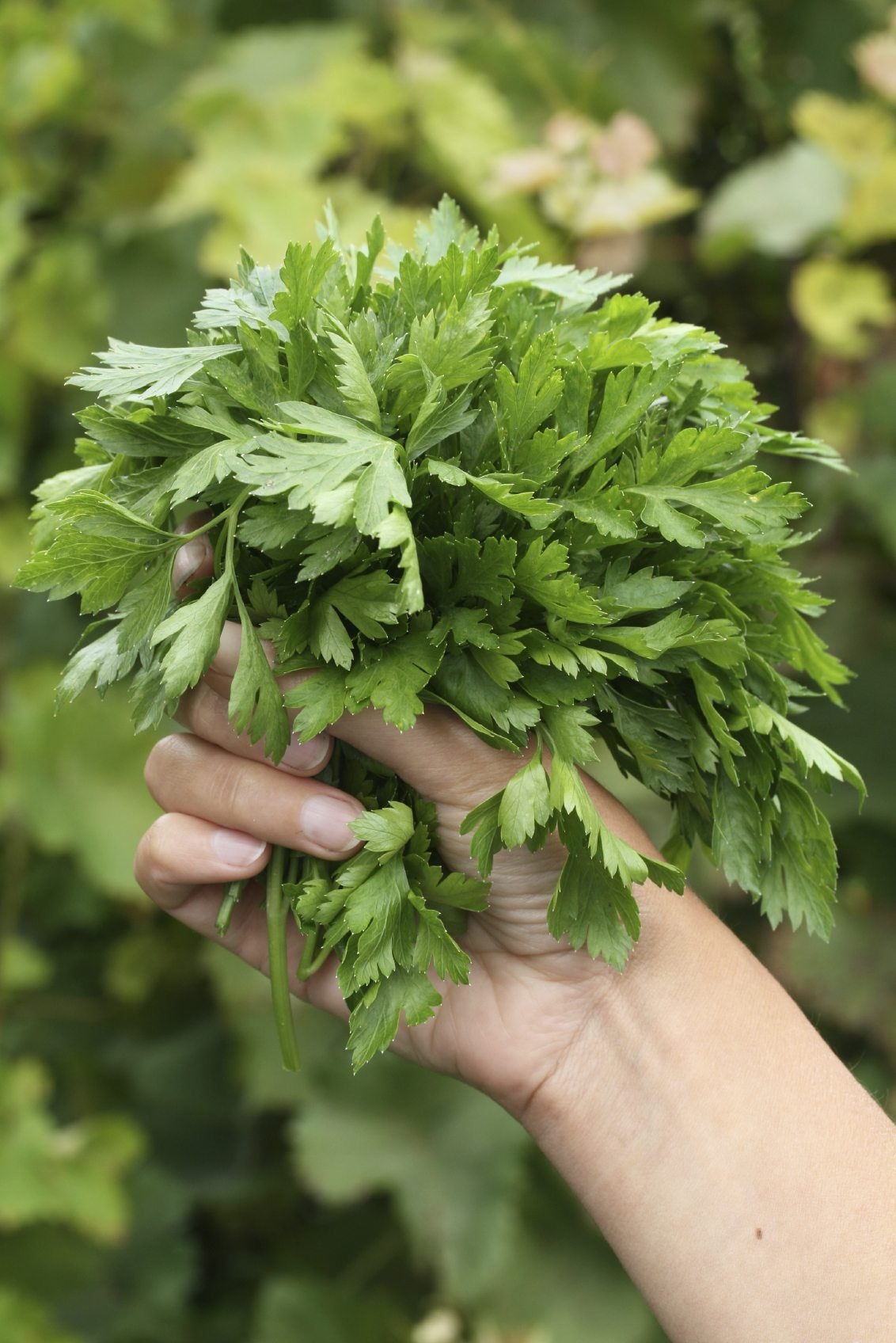
Parsley is probably the most commonly used herb. A member of the carrot family, Apiaceae, it is most commonly seen used as a garnish or as a mild flavoring in a multitude of dishes. As such, it's a must-have for an herb garden. The question is, when do you pick parsley and exactly where do you cut parsley for harvest?
When to Pick Parsley
Parsley is a biennial but is usually grown as an annual and is native to the Mediterranean. Like most herbs, it thrives in areas with six to eight hours of sun, although it will tolerate light shade. While it is often used as a garnish, parsley has more to give; it is high in vitamin C and A, as well as iron. Parsley is easy to grow either from nursery starts or from seed. Parsley seeds take a while to germinate so soak them overnight to hasten the germination rate. Then sow them ¼ inch (6 mm.) deep, spaced 4 to 6 inches (10-15 cm.) apart in rows 12 to 18 inches (31-46 cm.) apart. Keep the plants moist, about 1 inch (2.5 cm.) of water per week depending on the weather. Now that the plants are growing, how do you know when to pick the parsley? It takes between 70 and 90 days of growth before the plants are ready for parsley harvesting. The plants should have ample foliage. In some regions, seeds can be planted in the fall for early spring parsley harvesting and again in late winter for early summer harvest. Also, in some areas, parsley overwinters and you might be harvesting fresh parsley again in its second year.
How to Harvest Parsley
You’re ready to harvest your parsley but where to cut parsley is the question. Don’t be nervous; harvesting fresh parsley is easy. Just as with other herbs, parsley likes to be snipped, which encourages additional growth. Bunch the stems and leaves together and snip them off at ground level with kitchen shears. You can also just take a sprig or two starting with the outside stalks first. Be sure to cut at ground level though. If you just cut the leafy tops and leave the stems, the plant will be less productive. Either use the fresh herb immediately or place the whole thing in a glass of water and refrigerate until needed. You can also dry your parsley once it is harvested. Wash it and pat it dry, then allow the parsley to dry completely in a warm, airy place. Once the parsley is dry, remove the leaves from the stems. Discard the stems and store the dry parsley in an airtight container. You can freeze parsley as well. Both dried and frozen parsley should be used within the year, and the flavor will be much milder than when you use fresh parsley.
Love Gardening Know How? Our latest book, The Complete Guide to Vegetable Gardening, is available now!
Perfect for the gardener in your life, or for your own coffee table, this book boasts 224 pages of high-quality pictures, expert tips, and easy-to-follow advice to get your vegetable garden growing its best. Look for it at these sellers, and wherever quality books are sold.
Sign up for the Gardening Know How newsletter today and receive a free copy of our e-book "How to Grow Delicious Tomatoes".

Amy Grant has been gardening for 30 years and writing for 15. A professional chef and caterer, Amy's area of expertise is culinary gardening.
